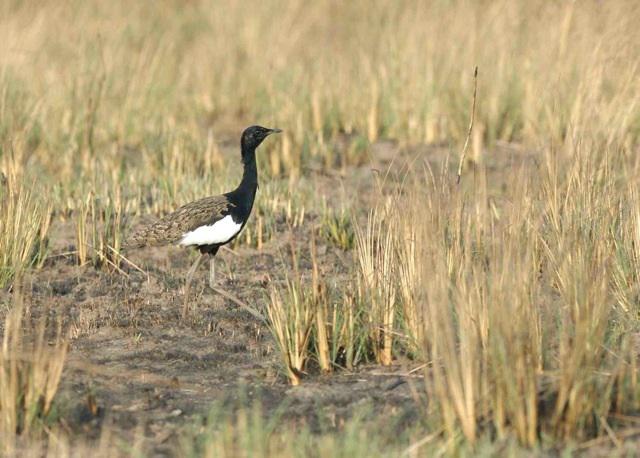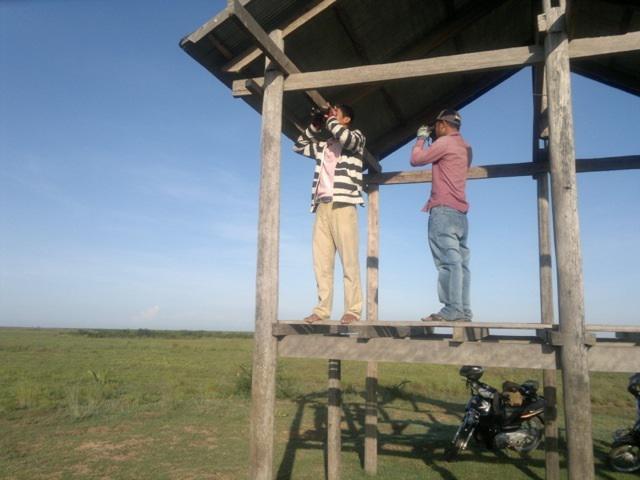Richard Hillard
To understand the habitat preferences of Bengal floricans during the non-breeding season, evaluate current/potential protected areas and threats from land use change and provide information for community based conservation management.

Adult male Bengal florican (Houbaropsis bengalensis).
The grasslands of Cambodia have recently been subjected to unprecedented rates of habitat loss due to land use change. One of the worst affected species is the Bengal florican. This bustard species was upgraded to ‘critically endangered’ on the IUCN Red List in 2007 due to its small and declining population, two-thirds of which are located in the Cambodian grasslands around Tonle Sap Lake. The florican is a migratory bird so it is imperative that both breeding and non-breeding habitats are well defined if conservation is to be successful. The breeding habitat has been well but there is a lack of detailed knowledge regarding non-breeding season sites and habitat requirements.

Two areas of land were designated Non-breeding Bengal Florican Conservation Areas (BFCAs) in 2008 based on the limited records of florican presence at that time. Their purpose was to protect land used by floricans from land conversion. However, recent studies have shown that these areas may actually be poorly representative of the non-breeding habitat. Consequently, florican survival could be dependent on using habitat outside the protected areas, where land is being converted for plantations and agricultural use. The study by Packman (2011) involved attaching satellite transmitters to 21 birds during 2008-2010 and assessed habitat preferences using remote sensing and field data. The aim was to obtain valuable new information about non-breeding areas as well as improve the understanding of habitat requirements. Resulting maps would enable analysis of how protected areas could be altered and enable effective habitat management and protection of floricans. Land protected from conversion would mutually benefit the impoverished local communities, whose livelihoods are dependent upon access to it.
However, eleven of the transmitters were only deployed in 2010 and as a result of an exceptionally dry non-breeding season many of the individuals did not migrate. The resulting limited sample size meant that any results would be statistically weak and only provide a poor basis for making conservation decisions. Since the study by Packman (2011), new florican location fixes have accumulated. These locations require collection of detailed field habitat measures and analysis using remote sensing, which would more than double the number of birds previously analysed. This increased data set will greatly strengthen the results as to florican non-breeding season habitat use and requirements. They will produce much more compelling evidence which will be used by Wildlife Conservation Society (WCS) Cambodia and the Forestry Administration of Cambodia to improve their conservation work on the Bengal florican.
Packman, C.E., 2011. Seasonal landscape use and conservation of a Critically Endangered Bengal Florican in Cambodia. PhD thesis, University of East Anglia, UK.